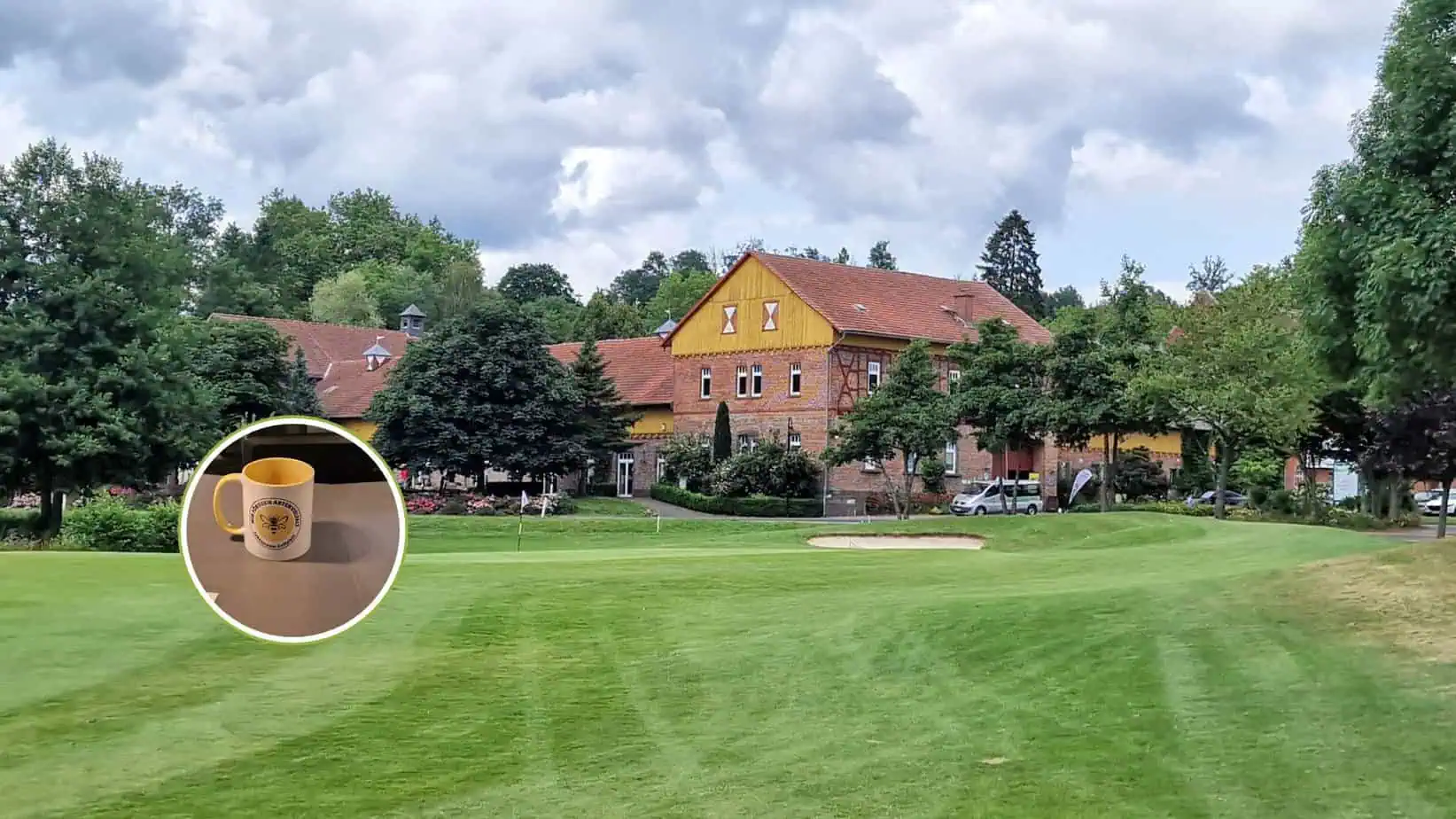Golf-Park Winnerod focuses on constant improvement
“We always start carefully and see where it takes us.” Cornelia Kraus, responsible for the “Golf course habitat” project at Golf-Park Winnerod, often says this. A tour of the golf course and the various buildings proves that such a cautious start can yield pleasing results. The golf course habit sign is rightly displayed here.
Swifts and bats
The buildings themselves are a central location for promoting biodiversity. The old brick-built estate has been largely renovated, “but the roof area in the halls for carts and electric trolleys in particular is of course perfect for bats, swifts and swallows,” explains Krause, looking upwards. Indeed, the view falls on round entrance tubes that the club managers provided during the last refurbishment. The animals can still get into their roof dwellings here. When golfers enter the inner courtyard of the building ensemble, they get a pure nature lesson — swifts cavort in numerous nests underneath the roof struts.
Participation at “Habitat Golf Course”, a project of the Hessian Golf Association’s was never a questions, which is why the club secretary is drinking from a coffee cup with the logo printed on it on this day. The countless golfers taking part in the men’s afternoon tournament are not upset while they search for their balls in the high rough beyond the fairways.
“We have gradually expanded the meadows,” explains Kraus. “We are currently testing the different seed mixtures, but of course we try to use regional seeds.” The fairways themselves have remained wide enough, but beautiful flowering strips of perennial plants are now developing along the forest edges and hedges. “Overall, however, we still have to feel our way forward in this area,” says Kraus. The balance between good playability, ecology and appearance is important to those responsible.
The South German Bee Week recently proved to be a good means of communication. “The feedback from members was really very good,” is the satisfied conclusion. Imaginative costumes, good humour, and a deep understanding of biodiversity – all this was made possible by Bee Week. Many golfers have now also realized how important it is to have a diverse range of food on the course, created for example by flowering meadows. The more than 100 orchard trees on the course also contribute to this. The two pruning courses, which have now been held for members, non-golfers and greenkeepers, were also part of implementing “Habitat Golf Course”. Since then, the trees have been perfectly cared for again.
The golf club’s next project involves relocating lizards, which is necessary because a parking lot for mobile homes is being constructed. Looking at the railing behind the steeply sloping driving range, Cornelia Kraus explains: “We can certainly do more with the area at the back, even though the terrain is already of a very high quality.” Golf is not played there anyway.
Dead wood and insect hotels
The approach to biodiversity at Winnerod Golf Park has also led to the occasional pile of dead wood or a dead tree being found along paths and in forest edges. “We would have chopped them all down in the past,” says Krause. The whole “golf course habitat” project is a learning process for those responsible at the club.The careful use of resources, which is promoted as part of the “Habitat Golf Course” project, also applies to the topic of water. Here, however, the Winnerod Golf Park is already geared towards thriftiness. “If it’s brown, it’s brown” is the motto. Translated to golf course maintenance, this means Only greens and tees are watered in dry weather anyway. The fairways, on the other hand, are left to the weather. Experience even from the dry phase two years ago has shown that the grass develops again quickly when the rain sets in. Relying on its own experience, constant checking and trial and error – all this has brought the club a long way. “We always discuss things together and then we get started,” concludes Cornelia Kraus. The success proves the method right.









